Abstract
BACKGROUND: A high proportion of Scottish general practices use a standard computer software package (GPASS, general practice administration system for Scotland), and thus, Scotland is uniquely placed to amalgamate primary care data on a national scale. Practices, however, vary widely in the nature and extent of data entered on computer and a major limitation on the use of the collected data is the absence of information on the completeness and accuracy of the computer database. AIM: This study set out to assess the quality of morbidity and repeat prescribing records held on computer by general practices in Scotland. METHOD: Forty-one practices, with above average levels of morbidity data recorded on computer, were selected on a geographic basis in relation to the national population distribution. Within each practice, 250 patients aged 45-64 years were selected at random. Data relating to 19 diagnoses, six surgical procedures and 40 repeat prescription drugs were extracted from the computer records of these patients and compared with information held on patients' paper records and supplied by patients in response to a postal questionnaire. The completeness and accuracy of computer entries were assessed in terms of sensitivity and positive predictive value, respectively. RESULTS: For the 5567 patients for whom all three sources of data (validated computer records, paper records and questionnaire responses) were available, sensitivity (completeness) of morbidity recording had median values of 0.67 for diagnoses, 0.93 for surgical procedures and 0.75 over all conditions examined. Practices varied both in the completeness of recording of each condition and in their overall performance. The predictive value (accuracy) of morbidity data was uniformly high for all conditions examined (median 1.00). For repeat prescription drugs, recording on GPASS was both complete and accurate. CONCLUSION: The recording of morbidity data on GPASS for 45-64-year-old patients in a selected group of 41 highly-computerized practices is about 75% complete and highly accurate. For national morbidity studies, it seems likely that amalgamated data from the best GPASS practices will be as complete and accurate as the morbidity statistics currently derived from hospital-based activities in Scotland.
Full text
PDF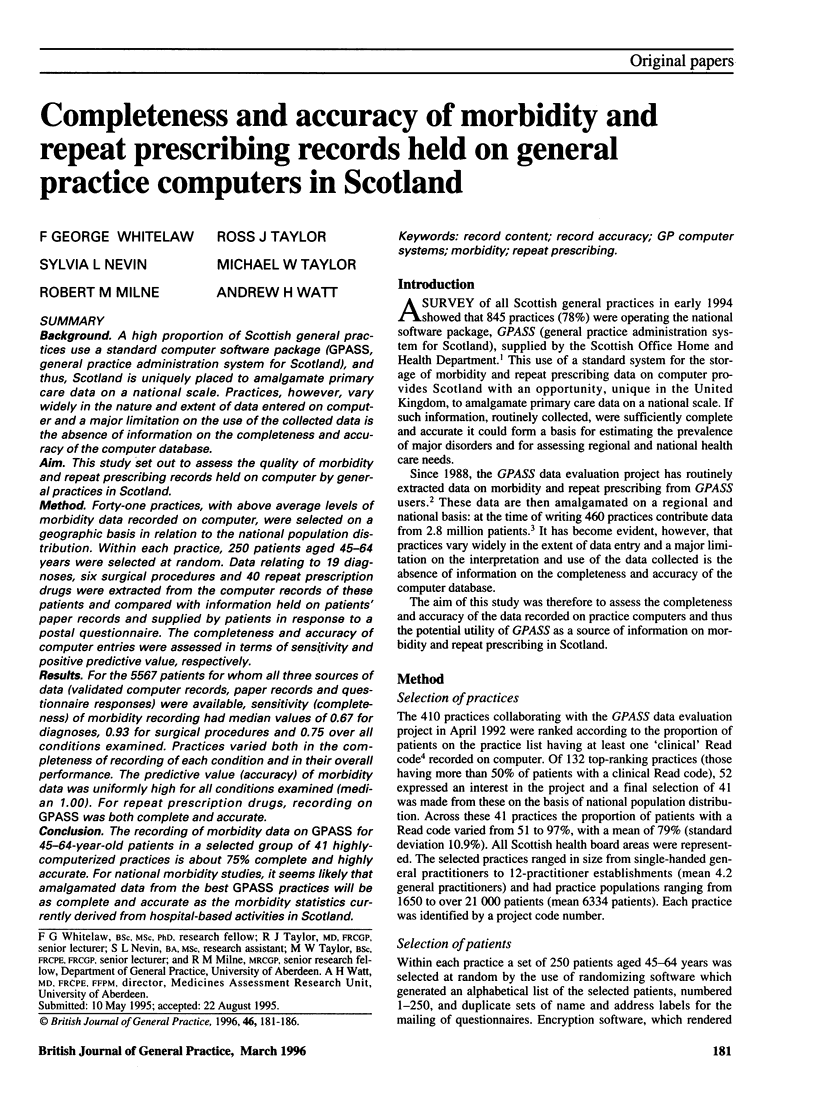
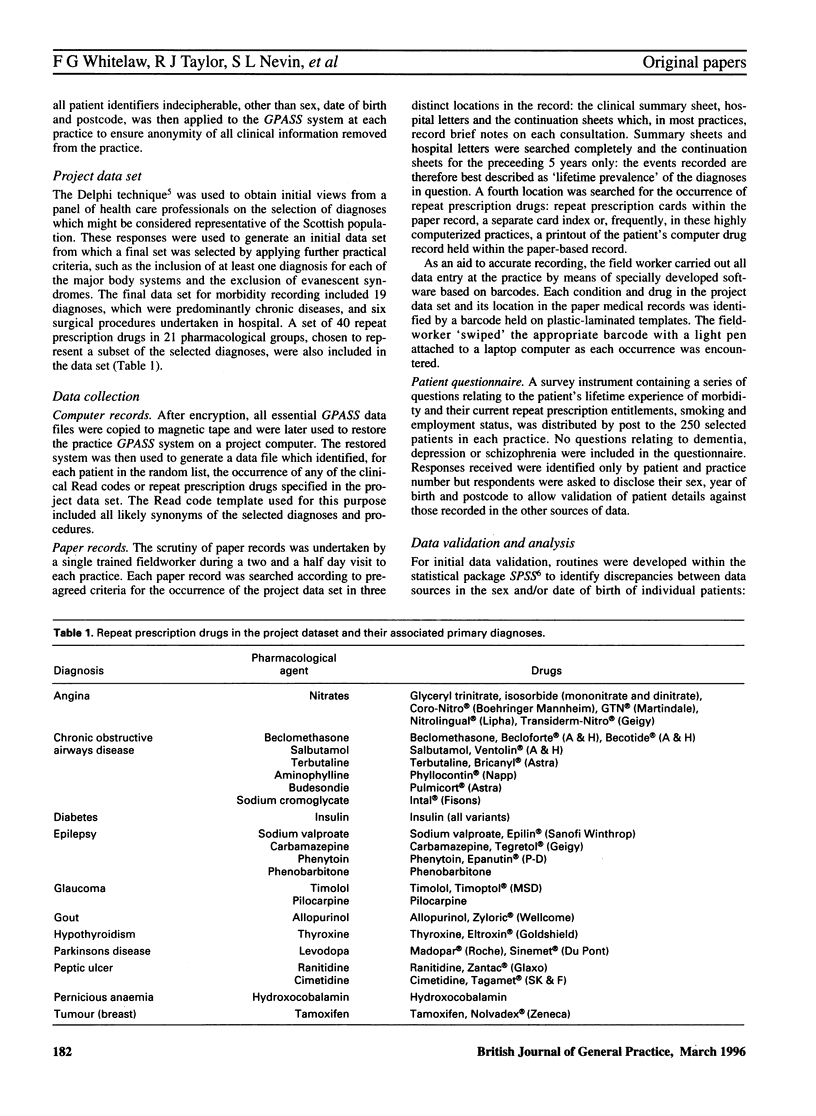
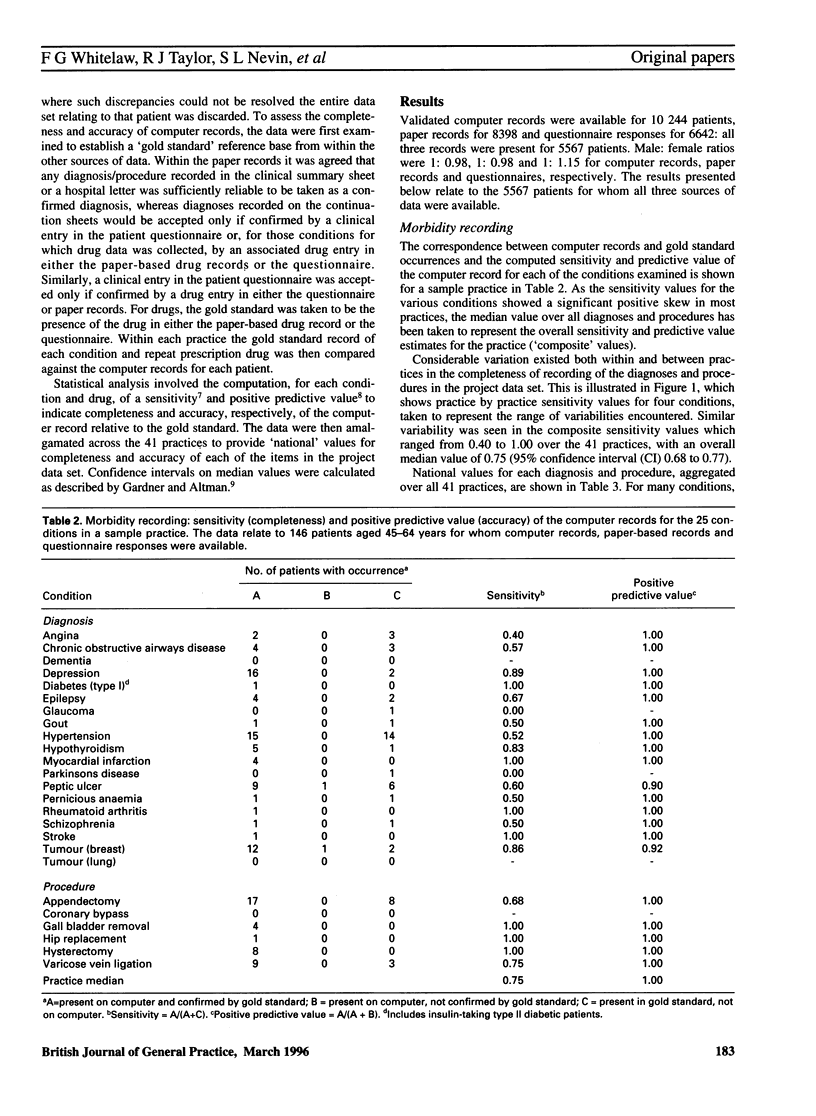
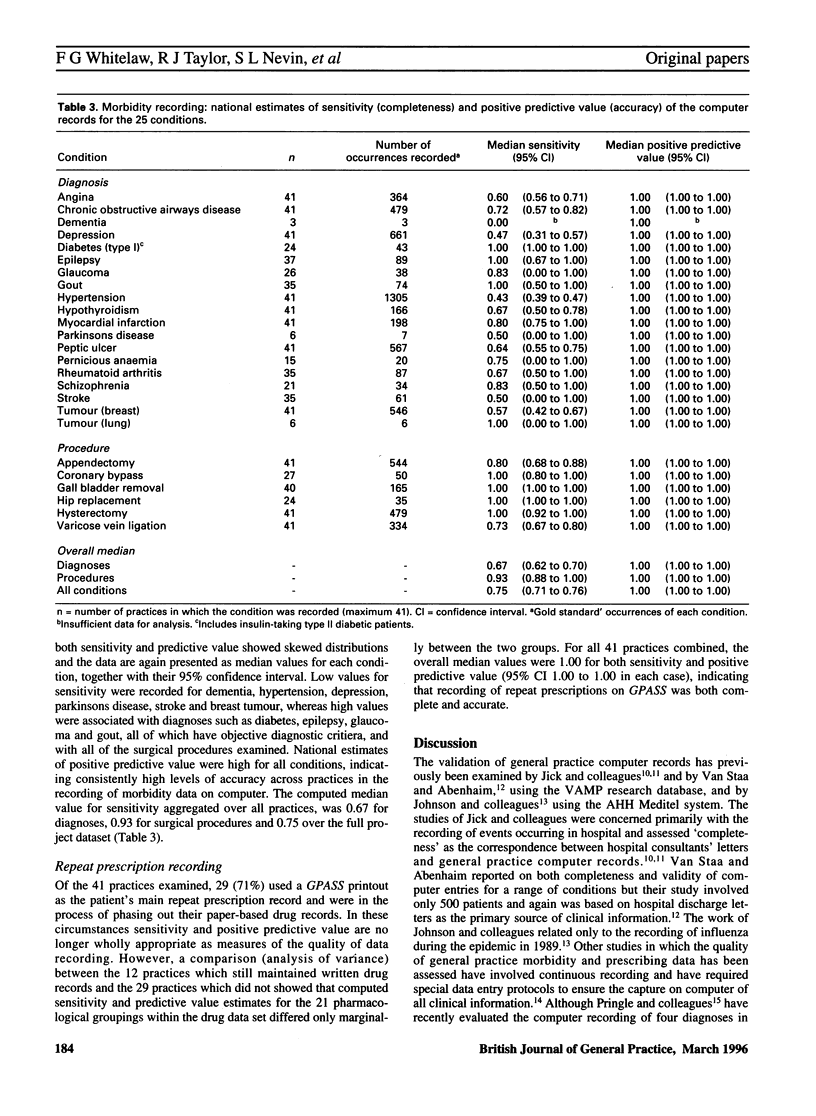
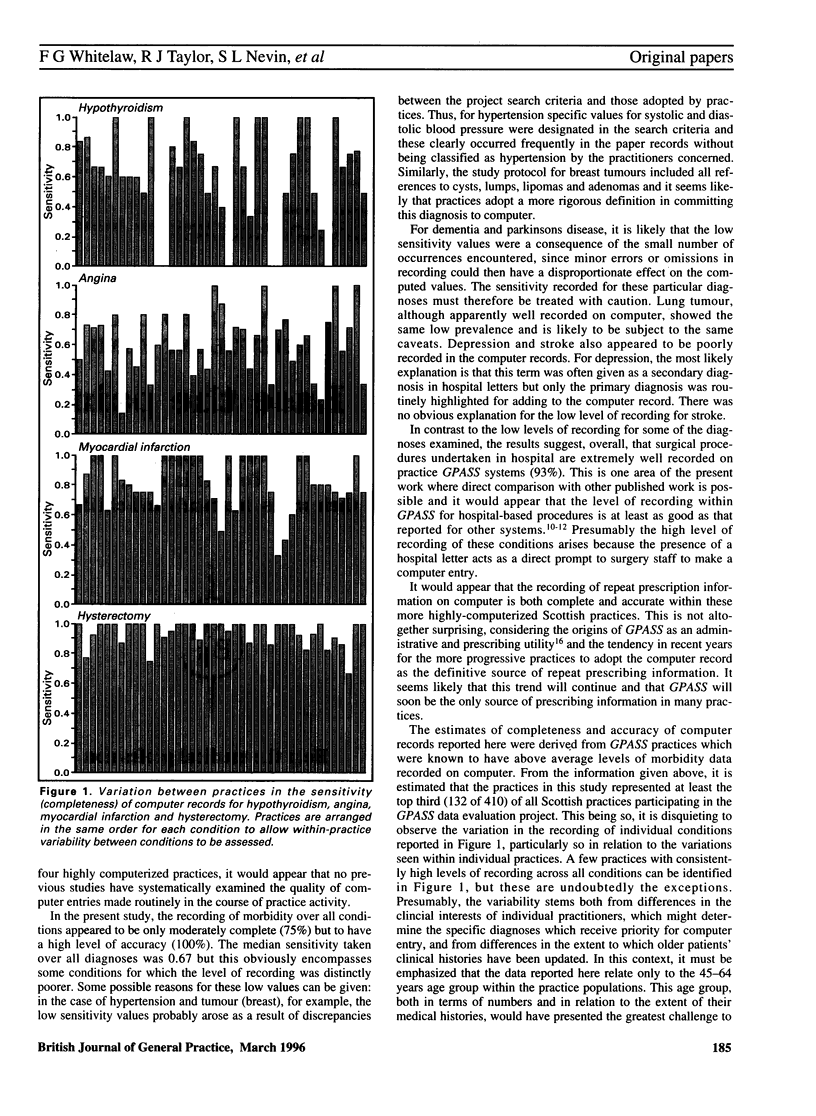
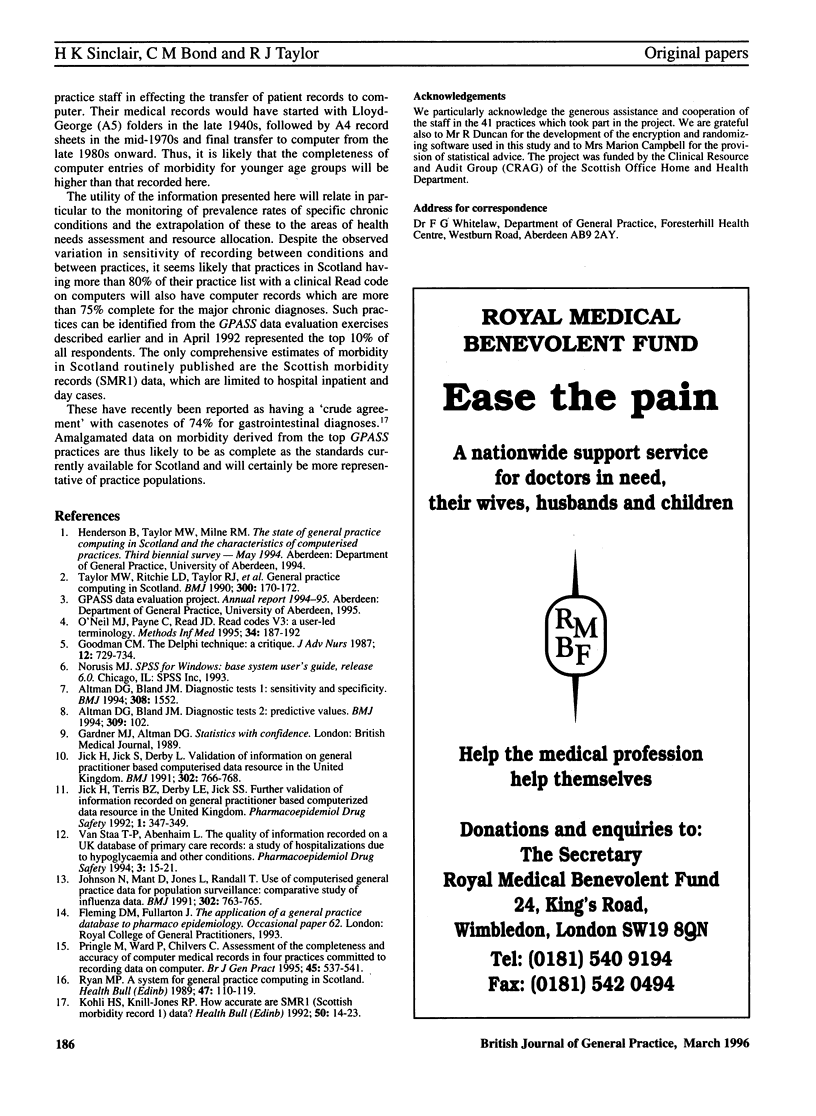
Selected References
These references are in PubMed. This may not be the complete list of references from this article.
- Altman D. G., Bland J. M. Diagnostic tests 2: Predictive values. BMJ. 1994 Jul 9;309(6947):102–102. doi: 10.1136/bmj.309.6947.102. [DOI] [PMC free article] [PubMed] [Google Scholar]
- Altman D. G., Bland J. M. Diagnostic tests. 1: Sensitivity and specificity. BMJ. 1994 Jun 11;308(6943):1552–1552. doi: 10.1136/bmj.308.6943.1552. [DOI] [PMC free article] [PubMed] [Google Scholar]
- Goodman C. M. The Delphi technique: a critique. J Adv Nurs. 1987 Nov;12(6):729–734. doi: 10.1111/j.1365-2648.1987.tb01376.x. [DOI] [PubMed] [Google Scholar]
- Jick H., Jick S. S., Derby L. E. Validation of information recorded on general practitioner based computerised data resource in the United Kingdom. BMJ. 1991 Mar 30;302(6779):766–768. doi: 10.1136/bmj.302.6779.766. [DOI] [PMC free article] [PubMed] [Google Scholar]
- Johnson N., Mant D., Jones L., Randall T. Use of computerised general practice data for population surveillance: comparative study of influenza data. BMJ. 1991 Mar 30;302(6779):763–765. doi: 10.1136/bmj.302.6779.763. [DOI] [PMC free article] [PubMed] [Google Scholar]
- Kohli H. S., Knill-Jones R. P. How accurate are SMR1 (Scottish Morbidity Record 1) data? Health Bull (Edinb) 1992 Jan;50(1):14–31. [PubMed] [Google Scholar]
- O'Neil M., Payne C., Read J. Read Codes Version 3: a user led terminology. Methods Inf Med. 1995 Mar;34(1-2):187–192. [PubMed] [Google Scholar]
- Pringle M., Ward P., Chilvers C. Assessment of the completeness and accuracy of computer medical records in four practices committed to recording data on computer. Br J Gen Pract. 1995 Oct;45(399):537–541. [PMC free article] [PubMed] [Google Scholar]
- Ryan M. P. A system for general practice computing in Scotland. Health Bull (Edinb) 1989 May;47(3):110–119. [PubMed] [Google Scholar]
- Taylor M. W., Ritchie L. D., Taylor R. J., Ryan M. P., Paterson N. I., Duncan R., Brotherston K. G. General practice computing in Scotland. BMJ. 1990 Jan 20;300(6718):170–172. doi: 10.1136/bmj.300.6718.170. [DOI] [PMC free article] [PubMed] [Google Scholar]


